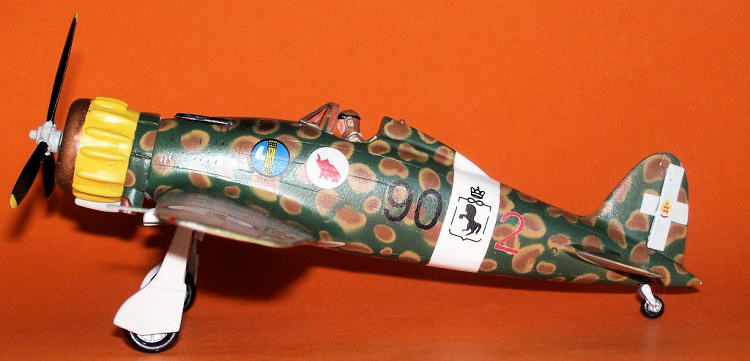
Intech/SMER 1/48 Macchi C.200
| KIT #: | T 127 |
| PRICE: | CAD$9.00 |
| DECALS: | One option |
| REVIEWER: | Pablo Calcaterra |
| NOTES: | This is the worst kit ever (no wonder I paid 9 Canadian Dollars for it…!) |

| HISTORY |
Franco
Lucchini, top scoring (?) Italian ace
Historical Background:
Franco Lucchini was born in
Two years later, with the Spanish Civil
war in full swing, he volunteered to fight with the Nationalists. At the time he
was flying with the 91st Squadron of the 10 Gruppo, 4 Stormo. In
When he returned to
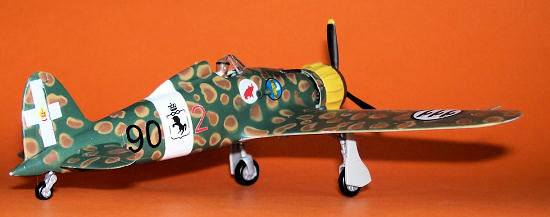
On June 14th, the first combat
in this scenario (and probably in the war) between both RAF (Italian and
British) took place. A group of 7 CR42 claimed the destruction of a Gladiator
but this loss cannot be verified with the British records. Still, Lucchini was
credited with 1/7th of a victory.
The next victory came on June 21st,
when Lucchini along with other 3 pilots claimed a
On July 24th an important air
battle between Gladiators, Blenheims and CR42s took place. Lucchini damaged 3
Blenheims and apparently claimed on Gladiator. Though claims were made on both
sides, only a Gladiator was damaged and subsequently destroyed by the Italians
after it force landed.
On July 28th
Lucchini, along
with 2 other pilots, shot down one Blenheim (30 Sqn) and severely damaged
another one (113 Sqn) (both claims confirmed by British records).
On August 4th, another very
large battle between
After another shared claim (Blenheim) in
September, he crashed in December during test flying a repaired CR42 but was
slightly injured.
During the first encounter with
Hurricanes, he claimed a shared damaged Hawke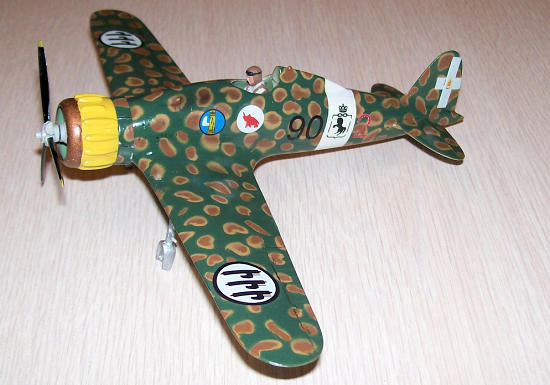 r fighter (validated by British
records)
r fighter (validated by British
records)
Other clashes took place in December
1940. At the end of the year he had flown 94 missions and took part in 13 air
combats. He claimed 3 victories and 15 shared victories.
In early 1941 his 10 Gruppo was
transferred to
He was promoted to Capitano (Captain) and
in June 1941 they moved to
His first recorded combat in this new
environment took place on June 25th. Clearly, records show a high
number of over claiming by the Italians during this period. They flew large
formations against the small defenses of
On June 27th, he claimed one
Hurricane shot down and another damaged flying this plane, Macchi 90-2. In fact,
no Hurricane was lost on this day.
On September 27th he was
forced to ditch when a formation of 10 Macchis lost their way and run out of
fuel. Critical injured he was sent back to Italy in a hospital ship and was out
of operations until November, when he was put in command of 84 Squadriglia, 4
Stormo. By then, he had flown 37 missions over
They reequipped with Macchi 202 at the
end of the year and in April 1942 they moved back to
During their first combat on May 9th,
they claimed 3 Spitfires but actually no Spit was even damaged! Four claims were
also filed by the British pilots, when only 2 planes where damaged by only one
round!
On the 15th, another Spitfire
was claimed by Lucchini but no
During this period of action, the
Argentine ace Ken Charney was flying Spitfires with 185 Sqn from
On May 26th, after fitti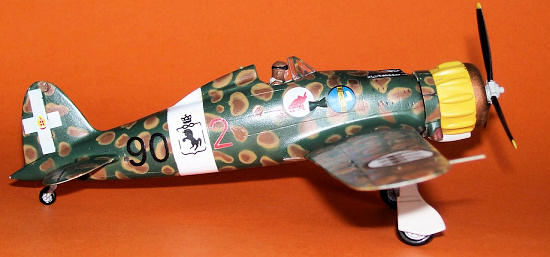 ng
their Macchis with desert equipment, they left for
ng
their Macchis with desert equipment, they left for
A very successful strafing attack took
place on August 31st in Burg el Arab. Many Allied planes and vehicles
were left seriously damaged and reaction of planes from the
During a combat with P-40s, Bostons and
Spits on October 20th, the spinner of his plane was torn off by a 20
mm shell, which forced him to land his damaged plane. Of the 43 combat ready
planes available on the morning of this date, only 11 were left in good
condition in the evening.
On
Early December 1942 found the Gruppo (84,
90 and 91 Squadrons) on their way to
On
In July 1943, fully recovered and after
having spent some time defending
On July 5th, during their
first combat against B-17s and after claiming a victory, h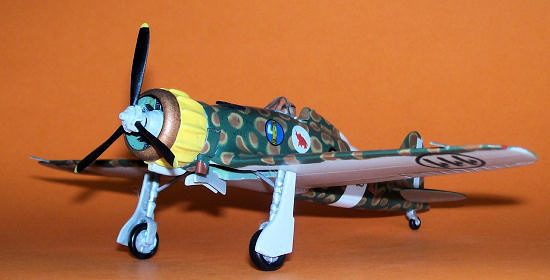 is plane was caught in
the defensive cross fire and Lucchini was seen to dive to the ground. His canopy
did not open. It was a hard blow for the Gruppo. His body was found two days
later, still inside his plane. His friend and 22 kill ace Leonardo Ferrulli was
also shot down and killed in the same combat.
is plane was caught in
the defensive cross fire and Lucchini was seen to dive to the ground. His canopy
did not open. It was a hard blow for the Gruppo. His body was found two days
later, still inside his plane. His friend and 22 kill ace Leonardo Ferrulli was
also shot down and killed in the same combat.
He had been awareded five Medaglie
d'argento al valore militare, four Croce di guerra al valor militare, the Croce
al merito di guerra, the Medaglia commemorativa della campagna di Spagna, the
Medaglia di benemerenza per i volontari della guerra Spagna and a German Iron
Cross 2nd Class during the war.
He was credited with 4 biplanes
victories, and a total of 22 in 294 missions and 70 aerial combats. He was also
credited with 52 shared claims.
He was called the Baracca della Seconda
Guerra Mondiale.
Italian pilots flew with underpowered and under gunned planes, lacking spare parts, in general in small numbers. When the Macchi 202/205 entered combat, they were too few to affect the course of the air battles. And still, they only had 4 small machine guns…(though it is better than the 2 of the Macchi 200!)
| THE KIT |
Terrible kit. Believe me. One of the
worst I have ever tackled. Wrong panel lines, lots of rivets everywhere, enough
flash to make another plane, bad fit, oversized pieces, bad alignment of mold
halves…you name it. This kit has it!
| CONSTRUCTION |
I started sanding out all those ugly
rivets and replacing them with scribed panel lines using the Osprey book as a
reference.
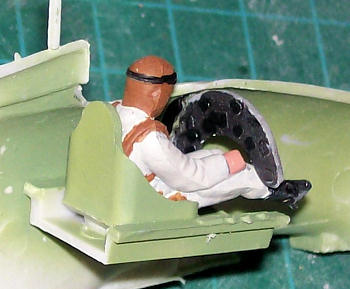 Then I sprayed green paint for the
interior and black for the engine, propeller. The cockpits is so
void of detail that either I had to scratch built everything or use a pilot. But
the pilot is a blob of plastic. So I used one from the spares. I painted his
clothes in white, like the Italian pilots you can see I many pictures of the
period. The dials were given some drops of Future.
Then I sprayed green paint for the
interior and black for the engine, propeller. The cockpits is so
void of detail that either I had to scratch built everything or use a pilot. But
the pilot is a blob of plastic. So I used one from the spares. I painted his
clothes in white, like the Italian pilots you can see I many pictures of the
period. The dials were given some drops of Future.
With the cockpit closed I had to use a lot of putty to fix the seams.
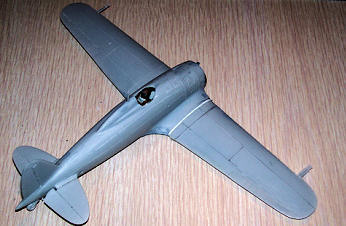 When I added the wings I found a large
gap at the root of the right side one. I cut a piece of plasticard, put it in
place and sanded it to smooth the union to the surface of the wings.
When I added the wings I found a large
gap at the root of the right side one. I cut a piece of plasticard, put it in
place and sanded it to smooth the union to the surface of the wings.
Lots of putty was also required for the
bottom of the fuselage/wings union. There is a large
gap inside the front part of the fuselage. Wires, equipment go here. None
supplied with the kit. I was not willing to go that far with this one!
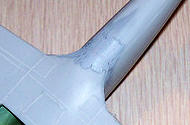 The windshield supplied is not the
correct one for Lucchini’s kit. I cut out the rear part and masked it.
The windshield supplied is not the
correct one for Lucchini’s kit. I cut out the rear part and masked it.
The engine was drybrushed with aluminum.
The front of the engine was painted in light gray.
A difficult area was the engine cover.
Too many parts and in the wrong place.
This required lots of sanding and putty.
After masking the cockpit, I was ready to
start with the interesting cammo pattern.
| COLORS & MARKINGS |
Paint:
I first gave the kit a hand of gray
Modelmaster Acryl 4763 (undersides and topside to check for imperfections) Then
I painted the white band and masked it.
Once this area was masked I painted the top surfaces including the bottom fuselage using Brown Modelmaster Acryl 4707.
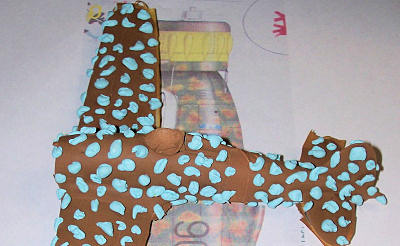 Using the painting in Osprey’s book, I
applied little balls of blue tac in roughly the proper positions. Then the model
was sprayed with Sand Modelmaster Acryl 4789.
Using the painting in Osprey’s book, I
applied little balls of blue tac in roughly the proper positions. Then the model
was sprayed with Sand Modelmaster Acryl 4789.
Then the little blue tack balls were
pressed a little bit against the kit, to increase the surface area and protect
the sand color. Finally, the coat of green was applied to the kit (Modelmaster
Acryl 4729).
The hood was painted in yellow, while the
front was painted in bronze with some drybrush in rust.
After removing the blue tac and doing
some retouches here and there (where I had applied too much pressure and the
sand area was too big) I drybrushed black pastel to give the plane a dirtier
look (moveable surfaces, some panels, area around guns).
Finally I gave the kit a coat of Future.
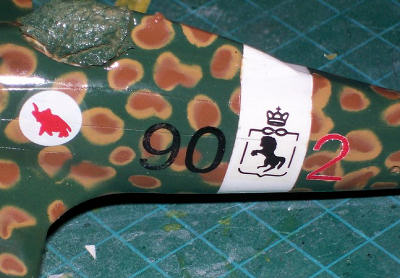 Decals:
Decals:
The kit decals are actually quite good,
to my surprise. Areas where they are wrong are the size of the Cavallino
Rampante (on the white band) and the lack of the Red 2 required for Lucchini’s
plane. The “90” also seem to have the wrong size and shape (too short and too
thick). For the first time ever, I made my own decals using Testors decal paper
(clear for the 90, printed in white paper for the 2).
I experienced some lack of ink density of the 90 so I used two layers of decals to get the proper color depth. The other problem is that while cutting the 2 from the paper, no matter how careful I was, I lost some red paint on the edge of the number. A close look reveals the defect. In this picture you can see the “9” with only one layer of decal, the “0” with 2 layers, and the white area around the red “2”.
| FINAL CONSTRUCTION |
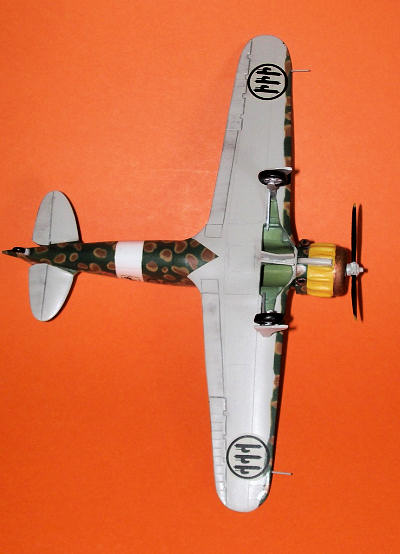 The engine had been glued using the
(minimal) support structure provided by the kit.
The engine had been glued using the
(minimal) support structure provided by the kit.
The landing gear is a nightmare. Due to
the fact that the molds are not aligned properly, the halves of the wheels and
legs don’t match and have a large gap that needs to be sanded. Detail is
minimal. The struts are useless because of this reason and were replaced with
parts from the spares box painted in aluminum.
The pitot was added to the right side of
the cockpit.
The windshield was sanded to fit the
contour of the fuselage. The gunsight was scratchbuilt and glued. The head rest
was painted in brown (leather).
Machine guns…well, those plastic strips
the kit gives us…I sanded them the best I could and painted them in black mixed
with aluminum.
I painted the three lights (red and green
wing tips and formation light on the end of the fuselage in white)
The exhausts were glued in place, after
painting them in rust and cammo green with black to simulate the opening.
To finish the kit I added the two antennas on the wings (from the spares box as well), painted in green (top) and gray (bottom).
| CONCLUSIONS |
Why did I decide to tackle this kit…I
don’t really know! I have built a Tauro Models Macchi 202 and I thought I could
have a nice addition to my collection of Italian planes of WWII (the other being
a SMER SM 79). At least now I have a plane flown by the Italian ace of aces of
World War Two.
| REFERENCES |
Italian Aces of World War Two, Massimello
and Appostolo (Osprey)
Biplane fighter aces website
Comando Supremo Aces of the Regia
Aeronautica website
Courage Alone, C. Dunning
Wings of Thunder, Meunier and Raimondi
May 2010
Pablo Calcaterra
If you would like your product reviewed fairly and quickly, please contact me or see other details in the Note to Contributors.